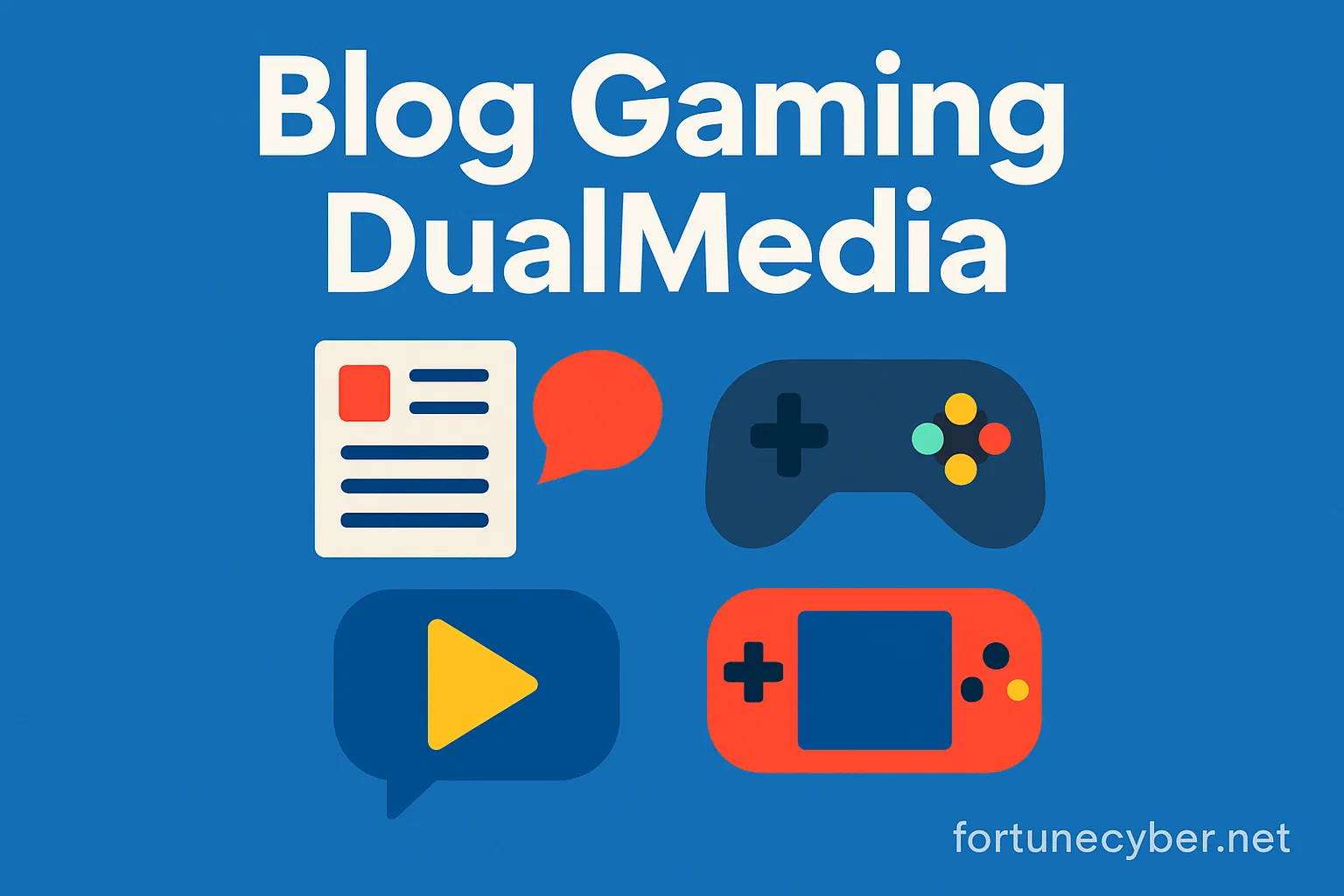As someone who has been in the digital content creation world for a while, I can confidently say that the landscape is constantly shifting. Just when we think we have things figured out, a new trend emerges, pushing us to think differently. One such trend that has caught my attention recently is Blog Gaming DualMedia. It’s this fascinating hybrid between blogging and gaming, and it’s changing the way we create and consume content.
What’s exciting about Blog Gaming DualMedia is that it’s not just a gimmick; it’s a way to transform the blog experience from something passive to something interactive. Instead of merely reading a review or an article, readers can now get involved. They can make decisions that impact the direction of the content, solve puzzles to unlock more information, and even play mini-games that make the entire experience feel more like an adventure. This is something I’ve been experimenting with on my own blog, and the results have been eye-opening.
When I first tried integrating interactive elements into my blog, I wasn’t sure how my audience would react. Would they enjoy being able to influence the outcome of a story or answer a quiz embedded in the post? To my surprise, the engagement skyrocketed. Readers spent more time on the page, returning to explore different choices they could make, and I found myself fostering a deeper connection with my audience. Blog Gaming DualMedia isn’t just a trend—it’s a way to revolutionize how we approach content creation.
Why Blog Gaming DualMedia Is a Game-Changer
Let’s be honest: as much as we love writing, traditional blogs can sometimes feel static. Even the best-written posts can be a bit flat if they don’t engage readers in multiple ways. This is where Blog Gaming DualMedia steps in, offering something far more exciting than just text on a page. The beauty of this approach is that it appeals to different kinds of readers. Some people prefer reading long-form articles, while others want something more dynamic. By merging both, you satisfy a wider audience.
For example, I wrote a blog post recently about a game I absolutely loved. Instead of the usual “review this game” format, I embedded decision points where the reader could choose their path. I linked to different scenarios within the same post, letting the reader shape the outcome. It was like reading a choose-your-own-adventure story but with the twist of making choices that had immediate consequences. To my surprise, people actually spent more time on the post because they could explore different outcomes and share their experiences with others.
In addition to making content more interactive, Blog Gaming DualMedia also gives you the chance to keep your audience engaged for longer periods of time. Instead of a typical blog visit where someone reads a post and then leaves, this format encourages them to explore, replay, and even participate. And we all know that the longer someone stays on your site, the better it is for SEO. It’s a win-win for both the content creator and the reader.
Making the Most of Interactive Features
When it comes to creating content that engages, there are endless possibilities. Interactive features are the heart of Blog Gaming DualMedia. These can include anything from simple quizzes to entire narrative-driven games that unfold within a blog post. For instance, I’ve embedded puzzles and quizzes in some of my posts that allow readers to test their knowledge or unlock bonus content by completing tasks. These elements not only make the content more engaging but also help build a sense of achievement for readers.
The key to using interactive features successfully is not to overwhelm your audience. Keep it simple at first. For example, I started by embedding a small trivia quiz within a game review I did. Nothing too complex—just a couple of questions related to the game’s storyline or mechanics. As my readers got more used to this concept, I gradually introduced more advanced features, like branching storylines or mini-games. Slowly but surely, I saw people spending more time on my site, interacting with the content and even coming back to see the different ways the story could unfold. The trick is to start small, experiment, and build your interactive features as you learn what works best for your audience.
Another important aspect is ensuring that the interactivity feels integrated, not forced. It’s easy to get excited and throw in too many features, but that can dilute the quality of the experience. I’ve learned through trial and error that the best experiences are those where the interactive elements serve the content, rather than distract from it. For example, in one of my posts, I included a decision point that led to either a discussion about the game’s mechanics or a behind-the-scenes interview with the developers. Each path felt natural, and readers enjoyed the sense of agency they had in navigating the content.
The Power of Multimedia Integration
A traditional blog is limited to text and images. Sure, you can add a video here and there, but it’s still a pretty one-dimensional experience. Blog Gaming DualMedia opens up a whole new world of possibilities by incorporating multimedia elements into the experience. This could be anything from embedded gameplay videos to podcasts, live streams, or even audio clips that help narrate the story.
I’ve found that embedding videos or interviews directly within my blog posts adds a lot of value to the content. For example, I wrote a post about an upcoming game and included a developer interview from YouTube. The video was relevant to the content, so it felt like a natural part of the post, rather than an add-on. This allowed readers to dive deeper into the subject without having to leave the blog. The experience felt more cohesive, and I saw more engagement as a result.
Podcasts are another great way to enhance the multimedia experience. I’ve started including a small section in my posts where I talk about a particular game, then link to a podcast episode where I dive deeper into the subject. This way, if readers want to learn more or hear a more detailed analysis, they can just click through. The beauty of integrating multiple types of media is that it keeps the content fresh and engaging, giving the audience more ways to experience it. It’s all about creating a content ecosystem where each element complements the other.
Monetizing Blog Gaming DualMedia: A New Opportunity
As much as I love creating content, at the end of the day, it’s important to find ways to monetize it too. Blog Gaming DualMedia offers some unique opportunities here. For starters, you can leverage affiliate marketing. If you’re writing about a specific game, you can link to it through an affiliate program. Readers who are interested in purchasing the game can do so through your link, and you’ll earn a commission. It’s a seamless way to generate revenue while still providing value to your audience.
Another option is sponsored content. Once your blog starts to attract more readers, companies in the gaming industry will likely want to collaborate. They might sponsor a post, provide products for review, or even work with you to create branded interactive experiences. I’ve worked with a few gaming companies that wanted to sponsor posts that featured exclusive behind-the-scenes content or special interactive events. These partnerships are a great way to monetize your content without compromising your creative freedom.
Lastly, you can offer premium memberships or exclusive content. If your Blog Gaming DualMedia content becomes popular, people will want to pay for access to special features. You could create exclusive storylines, behind-the-scenes videos, or early access to interactive content. I’ve found that offering something extra for subscribers not only generates revenue but also builds a more dedicated and loyal audience. They’re invested in the content, and they want to be part of the experience.
The Future of Blog Gaming DualMedia: What’s Next?
Looking ahead, the potential for Blog Gaming DualMedia is endless. As technologies like augmented reality (AR) and virtual reality (VR) become more mainstream, the interactive experiences we create could move beyond screens. Imagine being able to explore a game world within a blog post through VR or having your choices influence the storyline in ways that feel more real. These technologies could take the concept of Blog Gaming DualMedia to an entirely new level.
Artificial intelligence (AI) is another exciting area to watch. AI could allow content creators to personalize the experience for each user. For example, if a reader frequently chooses certain story paths or answers questions in a particular way, AI could adapt the content to cater to their preferences. This level of personalization could make the experience even more engaging, offering a truly tailored experience for every user.
For me, the future of Blog Gaming DualMedia is about evolving with the technology, staying creative, and continuing to push the boundaries of what a blog can be. It’s an exciting time to be a content creator, and I can’t wait to see where this trend takes us.
Read More: Quikernews.com: A New Era of Fast and Reliable News
Final Thoughts
Blog Gaming DualMedia is more than just an innovative trend; it’s a powerful tool that can completely transform the way we approach content creation. By combining the narrative power of blogs with the interactive engagement of gaming, content creators have the opportunity to create something truly unique. In my own experience, it has opened up new ways to connect with my audience, boost engagement, and even monetize my content.
If you’re a creator looking to experiment with new formats, I highly recommend giving Blog Gaming DualMedia a try. Start small, build your confidence, and gradually introduce interactive elements. As the world of digital content continues to evolve, this hybrid model will surely play a significant role in shaping the future of how we create, share, and experience content online.





